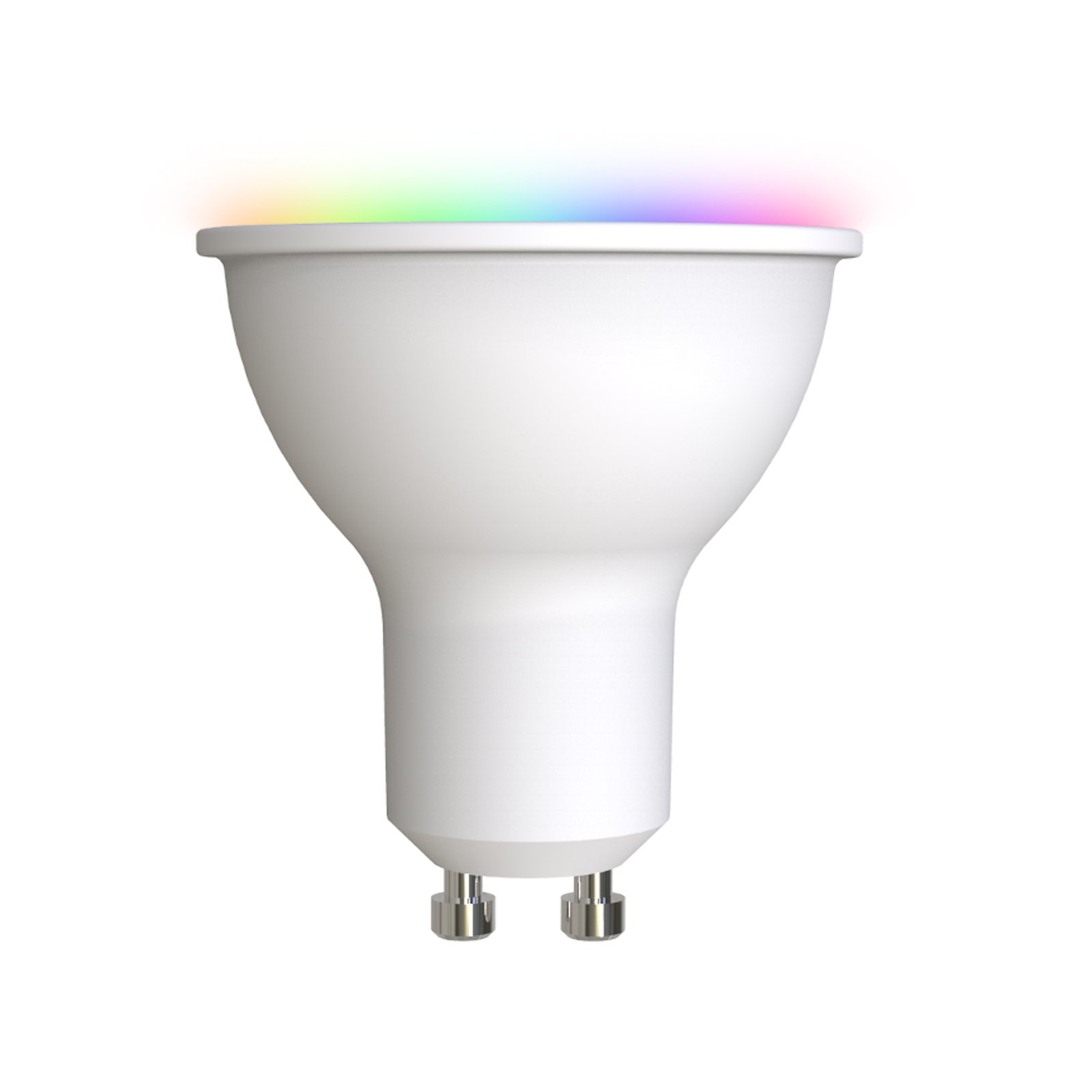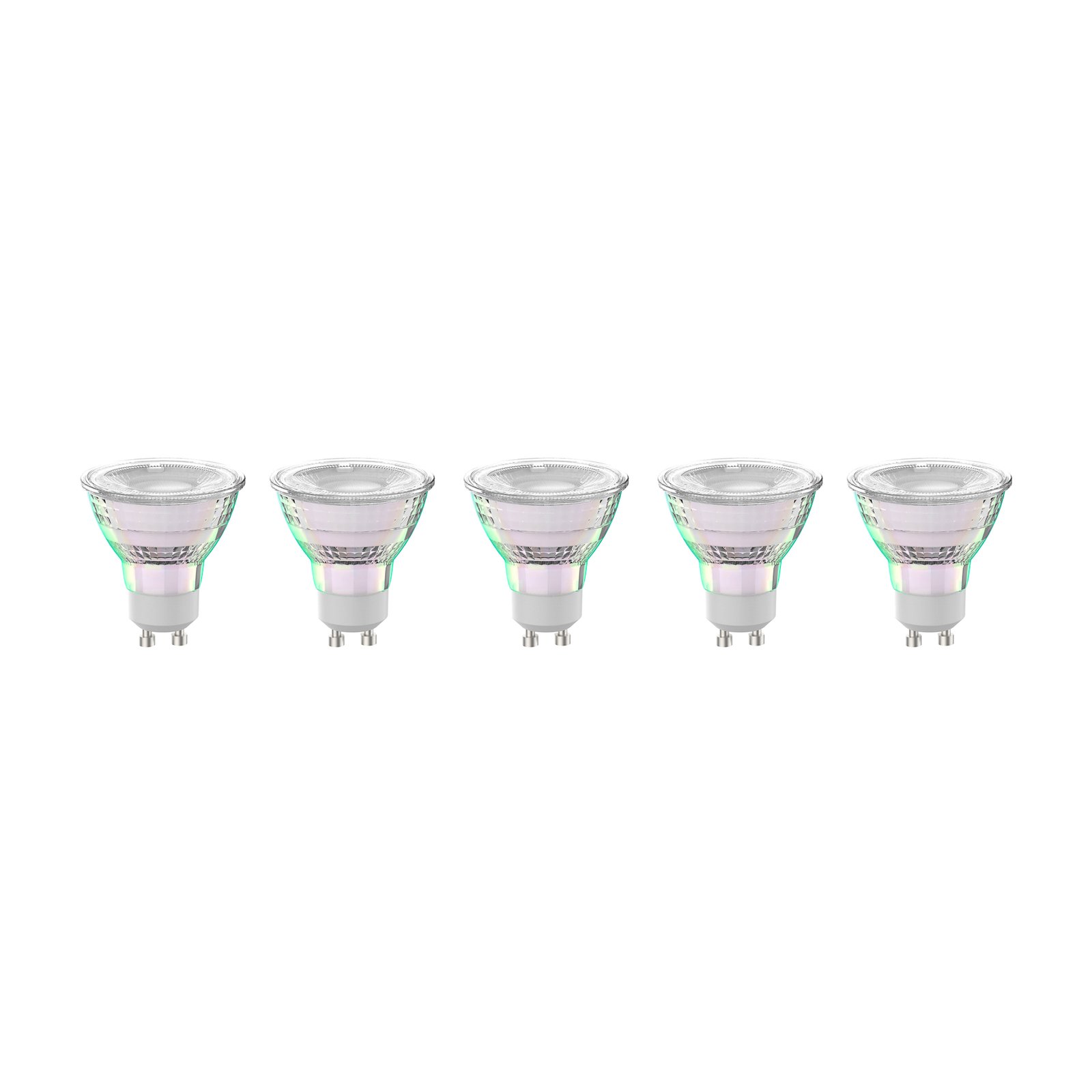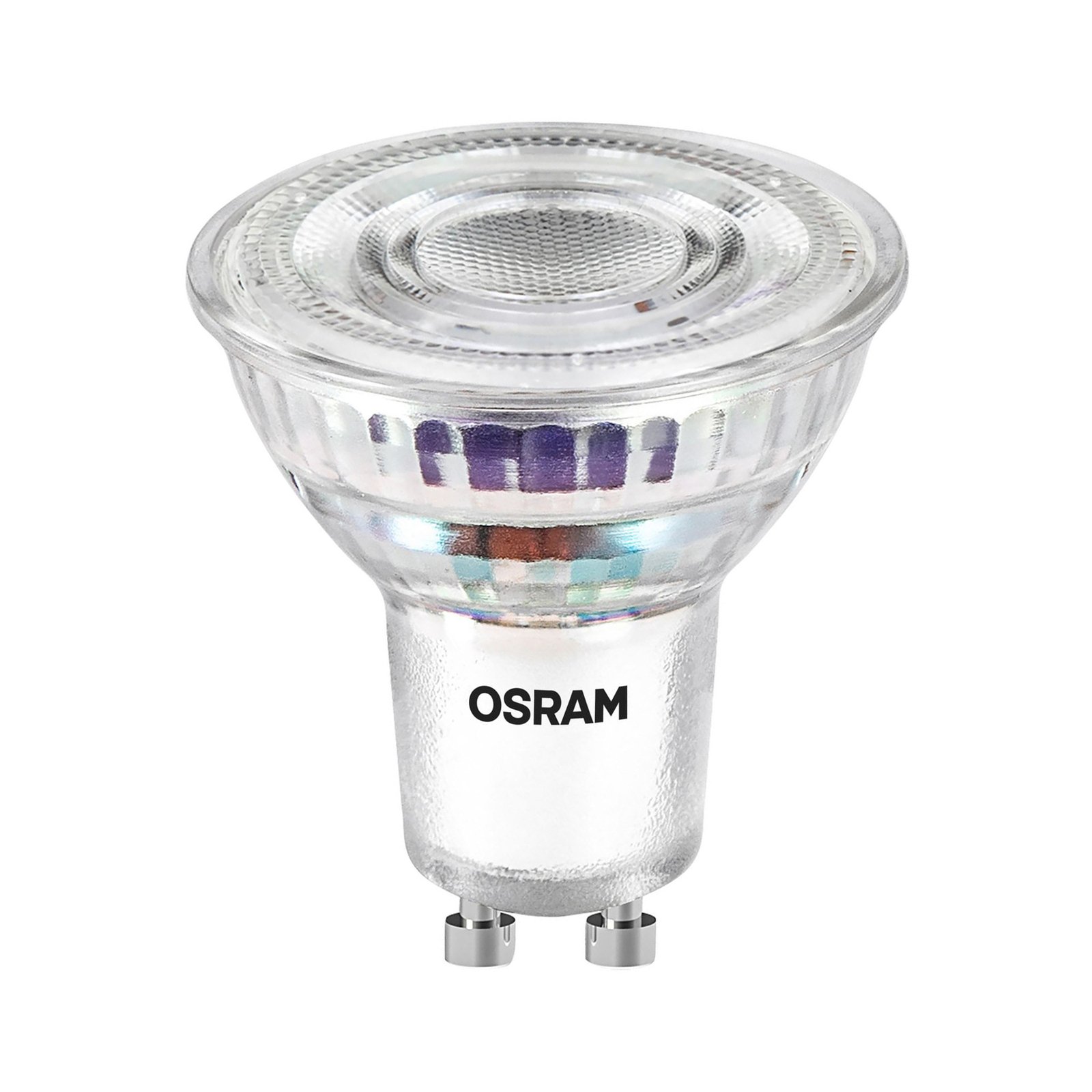- 50 days free returns
- Rated 'Excellent' on Trustpilot
- The UK's largest selection of brands
GU10 - efficient LED bulbs for precise lighting
Light has a decisive influence on the atmosphere of a room - from clearly focussed to softly illuminated. GU10 bulbs are a proven solution for anyone who wants to set specific accents or use functional light sources efficiently. Whether in the living area, kitchen or hallway: With their characteristic bayonet catch, GU10 LEDs are easy to replace and provide bright, pinpoint light as soon as they are switched on.
Thanks to modern LED technology, GU10 bulbs impress with their low energy consumption, long service life and wide range of light colours. They are the ideal choice to replace conventional halogen spotlights - perfect for recessed spotlights, spots or ceiling lights with GU10 sockets.
LED GU10 bulb - energy-saving and long-lasting
Switching to LED GU10 bulbs is worthwhile - both ecologically and economically. Compared to classic halogen bulbs, they consume significantly less energy and generate hardly any heat. This makes them particularly efficient and durable, which is a clear advantage, especially for permanently operated lights such as recessed spotlights or ceiling lights. GU10 LED bulbs are designed for direct operation on 230 V - a ballast or transformer is not required. This makes the exchange much easier.
Thanks to modern LED technology, GU10 bulbs are now available in different light colours. Warm white light (2,700-3,300 K) is suitable for creating a cosy atmosphere in the living area, while cool white light (3,300-5,300 K) provides factual, concentrated illumination in the kitchen or office, for example. In areas with a functional character - such as the storage room or stairwell - daylight white light (>5,300 K) is ideal.
The typical GU10 LED reflector bulbs provide directional light with clear demarcation - ideal for accentuating wall pictures, shelves or work surfaces. Thanks to the compact design and standardised socket, replacing existing bulbs with GU10 sockets is particularly straightforward - without any tools or conversion.
GU10 lamps for different lighting requirements
Whether as a targeted spot above the work surface or for general lighting in living rooms - GU10 lamps offer a wide range of applications. The decisive factor is choosing the right bulb for the application in question. Models with a wide beam angle are ideal for evenly illuminating corridors or kitchen units, while variants with a narrow light cone highlight individual areas.
Another important aspect is brightness, measured in lumens. For a pleasant basic brightness indoors, we recommend around 400 to 800 lumens per square metre of usable space. With GU10 LED bulbs, this value can be achieved with a power consumption of just 3 to 6 watts - a clear advantage over conventional halogen solutions.
Many GU10 LED bulbs are dimmable, offering maximum flexibility: bright and clear in the morning, dimmed and atmospheric in the evening. In combination with compatible dimmables or intelligent lighting systems, GU10 bulbs can be precisely matched to the desired lighting requirements - ideal in the living room, bedroom or dining area, for example.
Particularly practical: technologies such as DimTone (Philips) or GlowDim (OSRAM) not only change the brightness when dimming, but also the light colour - for atmospheric scenes.
Thanks to the standardised GU10 socket, the bulbs can be used universally - whether in wall lights, ceiling spotlights, recessed or surface-mounted lights. Their compact dimensions and pinpoint light also make them the preferred choice for lighting concepts where precision is required.
Smart Home compatible GU10 bulbs
GU10 bulbs can now be seamlessly integrated into modern smart home systems. Thanks to WLAN or ZigBee compatibility, many models offer the option of controlling the light via app or voice command - without any additional control cables or complex conversions. It can be conveniently operated via smartphone, tablet or common voice assistants such as Amazon Alexa or Google Assistant.
With GU10 smart home bulbs, not only can the brightness be flexibly adjusted - light colour, time control and scene selection are also available. In the morning, for example, an activating daylight is created, while in the evening a warm white, dimmed light ensures hours of relaxation. Such functions are particularly practical in the living room, bedroom or entrance area when convenience and security need to go hand in hand.
Numerous Smart GU10 LED bulbs can be connected to existing systems such as Philips Hue, Innr, OSRAM SMART+ or other brands. The combination of intelligent control, energy-efficient LED technology and simple installation makes it a future-proof solution for a wide range of lighting requirements throughout the home.
The strike-through prices correspond to the manufacturer's RRP.
All prices include 20% VAT, delivery costs excluded.







































































:format(jpeg))













:format(jpeg))





:format(jpeg))
:format(jpeg))
:format(jpeg))
















:format(jpeg))


















